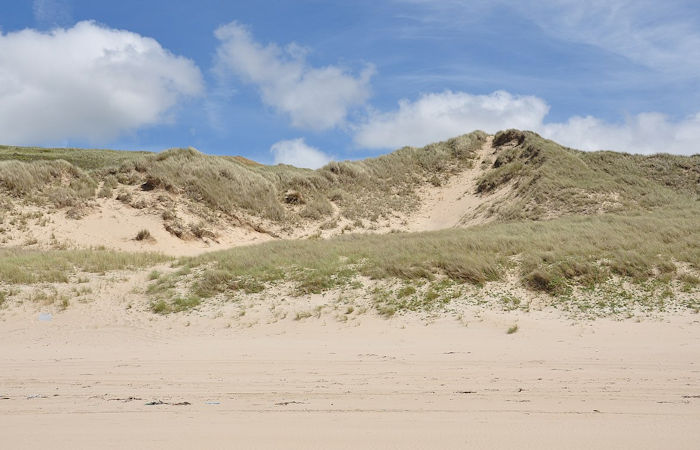Mount’s Bay, Lyonesse, Langarroc: Legendary Submerged Lands And Buried Towns Of Cornwall
Zteve T Evans - AncientPages.com - Cornwall, the uttermost southwestern peninsula of England, has a long, fascinating history absolutely brimming with folklore, legends, and traditions. Ancient monuments scatter the landscape, and all around the rugged coastline, traditions of smugglers, pirates and mermaids abound alongside intriguing legends of towns and land submerged by the sea or entombed under massive dunes of sand. Presented here is a brief look at three legendary places that lie buried under the sand or drowned by the sea.
St. Michael's Mount in morning sunset. Credit: Monster4711 - CC0 1.0
The first region we explore is Mount’s Bay, followed by a look over the ocean from Land’s End to the Scilly Isles for a glimpse of the lost land of Lyonesse. Finally, we look further around the coast for the buried city of Langarroc.
The Drowned Forest And Lake Under Mount's Bay
Mount’s Bay is home to St Michael’s Mount, a tidal island with a quaint harbour overlooked by a medieval church and a picturesque castle. It is connected to the Cornish mainland by a stone causeway at low tide. At high tide, the sea rises above the causeway cutting the Mount from the Cornish mainland, turning it into an island. According to tradition, St Michael’s Mount is where Jack the Giant Killer began his career by slaying Cormoran the Giant.
In the past, parts of Mount’s Bay were above sea level and home to woods and a body of water named Gwavas Lake. Humans and animals were believed to inhabit this area, and according to legend, on the bank of the lake was a small chapel where a holy man lived. People came to him seeking healing for ailments and agonies of the mind and body, which he cured using prayers and water from Gwavas Lake. Because of his remarkable healing powers, he became venerated as a saint, and his small chapel received a continuous stream of pilgrims seeking his aid.
Gwavas Lake also became renowned as a spa where people could find regeneration and renewal. The old and wizened were invigorated and rejuvenated, and even the fit and healthy young were refreshed and fortified. At an unknown time in the past, disaster struck, and the sea inundated the lake, hermitage, and forest, which remains underwater today. However, the name of Gwavas Lake lives on with an area of sea said to cover the lake named after it, and there are places on land known by the term.
The Beach at Land's End, Cornwall by John Brett (1831-1902). Credit: Public Domain
The cause and the time of the flooding remains a mystery. Many people, including the hermit, were said to have been lost. However, there were survivors who built a church upon a hill dedicating it to the saint of the lake who became known as Saint Pol, which over time changed to Saint Paul. The fossilized remains of a submerged forest can still be seen in the sea in Mount’s Bay at times when the tide is low. There is a belief the area that stretches from the western side of Mount’s Bay to St. Michael’s Mount on the eastern side was once above water.
Support for this comes from the old Cornish name for St. Michael’s Mount, which was “Karrek Loos yn Koos,” meaning, “the grey rock in woodland,” or, “the grey rock in the wood.” Its more modern name derives from a fifth century legend that tells how the Archangel Michael allegedly appeared on the Mount to local people. It was also believed that inhabitants of the lost land paid taxes before the inundation. It is unknown if the forest and the lake were a part of the legendary drowned land of Lyonesse, or a separate entity.
Legends Of The Lost Lyonesse
Arthurian, Cornish, and Breton traditions mention a substantial area of rich pastoral land that lay where the sea is now between Land’s End and the Scilly Isles. All that remains above water now are the Scilly Isles and the Seven Stone Reef after allegedly being flooded by the sea in a catastrophic meteorological or geological event.
Before the Elizabethan era, it was better known as Lethowsow, but, the name, Lyonesse, or Lyonnesse, became more fashionable later. According to Arthurian romance, it was the early home of Sir Tristan, whose father was the King Meliodas of Lyonesse. Tristan’s affair with Iseult, who was also known as Isolde, was the wife of his uncle, King Mark of Cornwall. Their story remains one of the great medieval love triangles.
The land of Lyonesse was said to be populated by hardworking and god-fearing people. There were numerous towns and villages and one hundred and forty churches before disaster struck. According to tradition, the Seven Stone Reef was once the top of a high hill crowned by a stately castle or a splendid cathedral that was the centrepiece of a large urban area known as the City of Lions.
Dunes above Perran Sands. Credit: Nilfanion - CC BY-SA 4.0
There are conflicting accounts of how and why Lyonesse became flooded. There is an idea it was just bad luck, and it was hit by an exceptionally powerful natural event such as storm or geological event. Another, idea is that it was divine punishment for the sins of its people.
One legend tells how a man from the Trevillian, or Trevelyan family, escaped by racing before a giant wave. He just managed to reach Land’s End with his horse shedding a shoe in the process. Another legend tells of an aristocrat named Lord Goonhilly, who built a small chapel in Sennen Cove in gratitude for his escape. Other accounts say people had time to escape the flood with families and livestock, but the waters never receded, and they were forced to build a new life in Cornwall, or beyond.
The Punishment Of Langarroc
Another different kind of calamity hit a legendary city named Langarroc situated on the Cornish coast between Perranporth and the River Gannel estuary. It had seven churches, and its citizens were strictly religious and industrious. They acquired great wealth through their enterprise and industry, but their arrogance, pride, and greed grew with that wealth.
The land around the city provided more than enough crops to feed the citizens, and the nearby sea provided an abundance of seafood of all kinds for free. Moreover, the city had a harbour and traded with distant lands bringing great wealth to the citizens. The only drawback to the city’s position was its remoteness from other towns and cities in Britain. Nevertheless, the enterprising citizens found a way to profit from this.
This work explores legends of towns, cities, islands and lands lost to the sea or buried by sand or snow. Along with the legend of the loss very often comes a myth of origin of a feature of the landscape, such as a lake, massive dune or ocean reef. As well as exploring mythical and legendary examples we look at real towns and places in history that were disastrously wiped out. In many cases we find there is a simple but powerful message that our behaviour is constantly monitored and judged. Any transgression of God's laws will not go unnoticed by the all-seeing eye. We will be judged and punished accordingly in a time and manner that suits the divine will. Vengeance will come! Read more
As they had prospered, so they had grown lazy and proud, seeing hard manual work as beneath their dignity. Therefore, convicts were brought in from distant cities to undertake the hard labour. The remoteness of Langarroc discouraged them from trying to escape. With cheap labour, the citizens grew more prosperous. Convicts who brought unique skills into the city were given special treatment and allowed to marry local people and soon took over entire districts. Nevertheless, these special ones had not changed their evil ways, and these districts became filled with debauchery and crime, which spread throughout the city.
According to legend, God became displeased with the citizens of Langarroc and issuing three warnings. After the third was ignored he sent a massive storm that swept in from the sea. Powerful winds stripped sand from the beaches into the air and deposited it upon the city. Langarroc was entirely entombed in the sand and buried below massive dunes. According to local tradition, during times of great storms, people caught outside on the dunes hear the muffled tolling of the bells of the seven churches of Langarroc above the storm.
Around The Coast
Although it might seem unbelievable that large tracts of the Cornish coast have vanished under the waves or are buried under sand, the fact is that the entire coastline around the shores of Britain is constantly changing due to geological forces, tides, weather, and erosion. It is usually a slow process, but it can occasionally happen quickly and dramatically.
Sandstorms have caused problems over the ages around the coast Britain. Other areas, such as the Welsh borough of Kenfig which was buried under sand in the 13th and 15th centuries. Furthermore, in 1694 a massive sandstorm hit the coast of Scotland burying farms, villages, and substantial tracts of land in the sand on the estate of Culbin, part of the Barony of Moray. Folktales and legends such as these may have been distant echoes of actual events that were exaggerated and twisted over the centuries. They may also be seen as reminders that humans are subject to natural forces and remain at the mercy of powers beyond our control and understanding.
Updated on November 25, 2023
Written by Zteve T Evans - AncientPages.com
Expand for references
Zteve T Evans - enjoys researching deep into the folklore, myths and legends that run through society and are part of our everyday lives and has written extensively for the #FolkloreThursday website He always finds it a source of fascination discovering and learning how our ancestors perceived the times they lived in and how they have influenced us today. Zteve believes that people have far more in common with each other than is often shown on the surface and this can often be seen in the folktales from other parts of the world. Zteve has two websites dedicated to myths, legends, and folklore from around the world. These are Under the influence! and Folkrealm Studies. He has also contributed to Enchanted Conversation Magazine. and runs Tellurian Studies, a site dedicated to issues concerning the environment, geology, ecology, biology, archaeology and any other branch of science that effects the planet and its inhabitants.
Copyright © Zteve T Evans - AncientPages.com All rights reserved. This material may not be published, broadcast, rewritten or redistributed in whole or part without the express written permission of Zteve T Evans and AncientPages.com
More From Ancient Pages
-
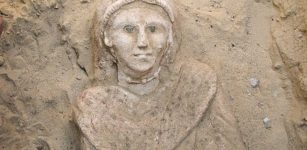 Curious Golden Figurine Of Female Dwarf Is A Puzzle
Archaeology | Feb 16, 2014
Curious Golden Figurine Of Female Dwarf Is A Puzzle
Archaeology | Feb 16, 2014 -
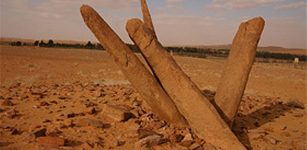 Stones Of Rajajil – Sophisticated Road Markers Or An Ancient Astronomical Observatory?
Civilizations | May 21, 2017
Stones Of Rajajil – Sophisticated Road Markers Or An Ancient Astronomical Observatory?
Civilizations | May 21, 2017 -
 Mada’in Saleh: Magnificent Timeless Rock-Cut Tombs And Monuments In The Desert
Civilizations | Oct 30, 2018
Mada’in Saleh: Magnificent Timeless Rock-Cut Tombs And Monuments In The Desert
Civilizations | Oct 30, 2018 -
 Mysterious 9,000-Year-Old Shaman Burial In Bad Dürrenberg – One Of Central Europe’s Most Spectacular Archaeological Discoveries
Featured Stories | Sep 15, 2023
Mysterious 9,000-Year-Old Shaman Burial In Bad Dürrenberg – One Of Central Europe’s Most Spectacular Archaeological Discoveries
Featured Stories | Sep 15, 2023 -
 Will Archaeologists Uncover The Secrets Of A Rare Viking Ship Grave In Norway Before It’s Destroyed?
Archaeology | Nov 14, 2020
Will Archaeologists Uncover The Secrets Of A Rare Viking Ship Grave In Norway Before It’s Destroyed?
Archaeology | Nov 14, 2020 -
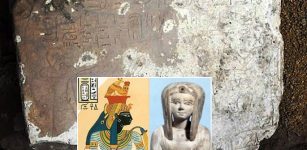 Limestone Stela Of Liberation Discovered In Kom Ombo Temple In Aswan, Egypt
Archaeology | Oct 17, 2018
Limestone Stela Of Liberation Discovered In Kom Ombo Temple In Aswan, Egypt
Archaeology | Oct 17, 2018 -
 Our New Relative: ‘Homo Luzonensis’ – New Species Of Early Human Found
Archaeology | Apr 11, 2019
Our New Relative: ‘Homo Luzonensis’ – New Species Of Early Human Found
Archaeology | Apr 11, 2019 -
 Aillén Mac Midgna: Evil Goblin Who Terrorized Sacred Hill Of Tara
Celtic Mythology | Mar 28, 2024
Aillén Mac Midgna: Evil Goblin Who Terrorized Sacred Hill Of Tara
Celtic Mythology | Mar 28, 2024 -
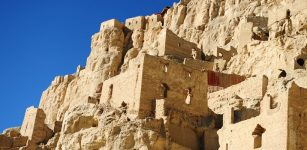 Ruins Of The Mysterious Kingdom Of Guge That Suddenly Vanished Overnight
Civilizations | Apr 10, 2021
Ruins Of The Mysterious Kingdom Of Guge That Suddenly Vanished Overnight
Civilizations | Apr 10, 2021 -
 What Was It Like To Be A Student In The Middle Ages?
Ancient History Facts | Jun 6, 2019
What Was It Like To Be A Student In The Middle Ages?
Ancient History Facts | Jun 6, 2019 -
 Zagros Mountains: Home To Tribes, Kingdoms And Empires For Thousands Of Years
Civilizations | Sep 16, 2020
Zagros Mountains: Home To Tribes, Kingdoms And Empires For Thousands Of Years
Civilizations | Sep 16, 2020 -
 Ancient Fossils Reveal Climate Altered Humans’ Body And Brain Size
Archaeology | Jul 8, 2021
Ancient Fossils Reveal Climate Altered Humans’ Body And Brain Size
Archaeology | Jul 8, 2021 -
 Unexplained Forest Mystery In Oregon Baffles Scientists
Featured Stories | Jun 24, 2024
Unexplained Forest Mystery In Oregon Baffles Scientists
Featured Stories | Jun 24, 2024 -
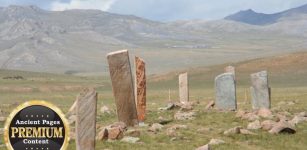 Mysterious Standing Deer Stones Of Mongolia -Their Purpose And Creators Remain Unknown
Ancient Mysteries | Jun 18, 2014
Mysterious Standing Deer Stones Of Mongolia -Their Purpose And Creators Remain Unknown
Ancient Mysteries | Jun 18, 2014 -
 Historic Graffiti Made By Soldiers Sheds Light On Africa’s Maritime Heritage – New Study
Archaeology | May 6, 2022
Historic Graffiti Made By Soldiers Sheds Light On Africa’s Maritime Heritage – New Study
Archaeology | May 6, 2022 -
 Babylon Excavation Uncovers 478 Artifacts, Including Cuneiform Tablets and Seals
Archaeology | Oct 17, 2024
Babylon Excavation Uncovers 478 Artifacts, Including Cuneiform Tablets and Seals
Archaeology | Oct 17, 2024 -
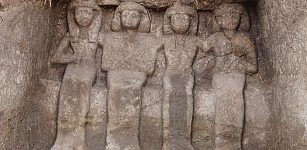 Niches With Six Figures Cut In Rock Discovered At Gebel Al-Silsila, Aswan
Archaeology | Dec 27, 2015
Niches With Six Figures Cut In Rock Discovered At Gebel Al-Silsila, Aswan
Archaeology | Dec 27, 2015 -
 Medieval Ship Discovered Off The West Coast Of Sweden May Have Been Attacked By Pirates
Archaeology | Feb 4, 2022
Medieval Ship Discovered Off The West Coast Of Sweden May Have Been Attacked By Pirates
Archaeology | Feb 4, 2022 -
 Ancient Symbol Seed Of Life Contains Hidden Secrets Of The Seven Days Of Creation
Ancient Symbols | Oct 8, 2017
Ancient Symbol Seed Of Life Contains Hidden Secrets Of The Seven Days Of Creation
Ancient Symbols | Oct 8, 2017 -
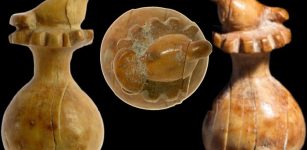 The Dove And The Pomegranate: Who Was The High-Ranking Lady Who Owned This Unique Artifact In The First Temple Period?
Artifacts | Aug 9, 2023
The Dove And The Pomegranate: Who Was The High-Ranking Lady Who Owned This Unique Artifact In The First Temple Period?
Artifacts | Aug 9, 2023



